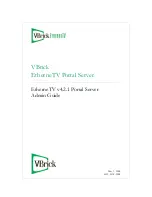
73
W&T
Controlling the Web-IO with TCP/UDP Sockets
Subject to errors and modifications:
Disadvantages:
.
Only partial event-controlled programming possible.
This limits its usefulness for time-critical applications.
.
Only client applications possible, no server applications.
Binary structures BINARY
In this mode the Web-IO can function as a TCP client, TCP
server or UDP peer. Access can be password-protected.
The Web-IO defines binary structures for the various functions
such as reading inputs, setting outputs, etc. Access takes place
solely by exchanging these structures.
Advantages:
.
Flexible in its application, since client and server
applications are possible
.
Fast communication through use of structures. The status
values are always at a defined location, and no strings
need to be analyzed for their contents
.
Event-triggered communication allows the application to
respond immediately to changes in the inputs
.
Password protected access makes a high degree of
application security possible
Disadvantages:
.
In higher languages which do not support binary structures
a workaround in the form of binary strings or byte arrays
must be found
Summary: BINARY mode should be used for professional
applications which require a high level of processing speed.
Special forms of BINARY mode
.
Box-to-Box
Two Web-IOs can communicate with each other without
involving an application program on a PC
.
OPC
Summary of Contents for 57630
Page 8: ...8 W T Content...
Page 22: ...22 W T Assigning the IP address...
Page 44: ...44 W T configuring the network parameters...
Page 194: ...194 W T Diacnostics and testing...
















































